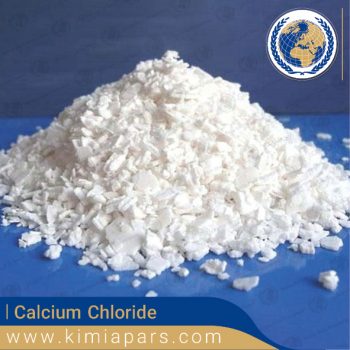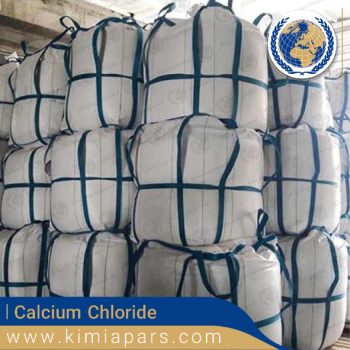Calcium Chloride 96%
- Description
- Analysis of Calcium Chloride
Description
Calcium Chloride 96%
Chemical Formula of Calcium Chloride: CaCl2
Other names: Ice bite
Uses of Calcium Chloride
- As an accelerator for concrete and as a solidifying agent in paint production
- Oil-well drilling and as dehydrant in petrochemical industry
- In dye production and in printing industry
- Dust control and removal (coal dust, mine dust, etc.)
- As a coagulant in rubber industry
- As a chloridizing agent and additive in metallurgy (ferrous)
- As a preservative agent for food and anti-rot treatment for wheat, fruits and vegetables
- As an additive in paper industry and de-inking of recycled paper
Packaging: 25 kg PP/PE bags – 1.25 MT jumbo bags
Payment term: 100% cash in advance
Min order of Calcium Chloride: 1 * 20’ft container
Calcium Chloride: An Overview
Calcium chloride is a chemicals compound with the formula CaCl2. It is a salt that is soluble in water and is often used as a desiccant, refrigerant, and road de-icer. Calcium chloride is also widely used in many industrial applications, including oil and gas drilling, food preservation, and concrete manufacturing.
In its pure form, calcium chloride is a white, crystalline powder that has a salty, bitter taste. It is non-flammable, non-toxic, and can exist in either an anhydrous form or a hydrated form, with the latter being more commonly used. The hydrated form of calcium chloride has the formula CaCl2·xH2O, where x is typically 6.
Uses in the Industries
-
Drilling and Exploration
Calcium chloride is widely used in the oil and gas industry for drilling and exploration purposes. It is added to drilling mud to increase its density, which helps to prevent the wellbore from collapsing and stabilizes the formation. This allows for better control of the well, reduces the risk of blowouts, and improves the overall safety of the drilling operation.
In addition, calcium chloride is also used as a completion fluid in the oil and gas industry. It is added to the well to increase the pressure and prevent the formation from collapsing. This helps to ensure that the wellbore remains open and the oil and gas can flow freely to the surface.
-
De-icing
Calcium chloride is widely used as a de-icer, particularly on roads and highways. When applied to frozen roads, it lowers the freezing point of water, helping to melt the ice and snow and improve traction. This makes it an effective and efficient alternative to traditional road salt, which can take longer to melt ice and can be more harmful to the environment.
Calcium chloride also has a longer shelf life than road salt and is less likely to be washed away by rain or snow. This means that it can be stored and used throughout the winter months, making it a cost-effective solution for road de-icing.
-
Food Preservation
Calcium chloride is used in the food industry as a firming agent, pickling agent, and preservative. It is often added to fruits and vegetables to help maintain their firmness and improve their texture. This is particularly important in the canning and pickling process, where the fruit or vegetable is subjected to high temperatures and pressure.
In addition, calcium chloride is also used as a food preservative, helping to extend the shelf life of products by preventing spoilage and maintaining their quality. This is particularly important for products that are susceptible to spoilage, such as dairy products and meats.
-
Concrete Manufacturing
Calcium chloride is used in the concrete industry as an accelerator. When added to concrete, it helps to increase the rate of setting, allowing the concrete to harden faster. This is particularly useful in construction, where time is often a critical factor.
In addition, calcium chloride also helps to improve the strength and durability of concrete. It does this by reducing the amount of water needed in the mix and improving the curing process. This results in a stronger and more durable concrete that is less likely to crack or deform over time.
-
Drying and Desiccant
Calcium chloride is commonly used as a drying agent and desiccant in many industrial applications. When added to products, it helps to absorb moisture, reducing the risk of spoilage and improving the shelf life of the product. This is particularly important for products that are susceptible to moisture damage, such as electronic components
Environmental Impacts
Despite its widespread use in many industries, Calcium Chloride can have negative environmental impacts when released into the environment. It can contribute to soil and water pollution, leading to damage to natural habitats and harm to aquatic life. Additionally, the production of Calcium Chloride can result in the emission of greenhouse gases, contributing to global climate change.
So Calcium Chloride is a versatile and widely used chemical in many industries. Its applications range from de-icing roads and highways to its use as a therapeutic agent in the pharmaceutical industry. However, it is important to consider the potential environmental impacts of its production and usage.
Calcium Chloride Analysis |
| CONTENT | Test Result |
|---|---|
| Purity(CaCl2) | 96% |
| CaCO3 | 0.076 |
| Fluoride(F) | MAX: 0.004 |
| NaCl | 0.15 |
| MgCl2 | 0.02 |
| PH | 9.5 |
| Pb | Max: 0.002 |


